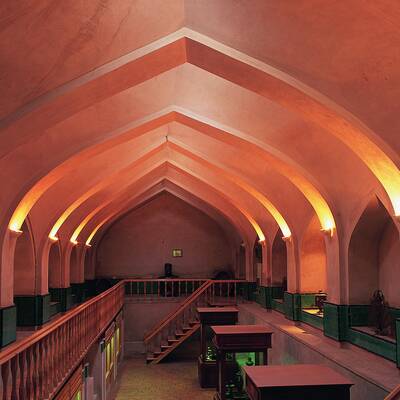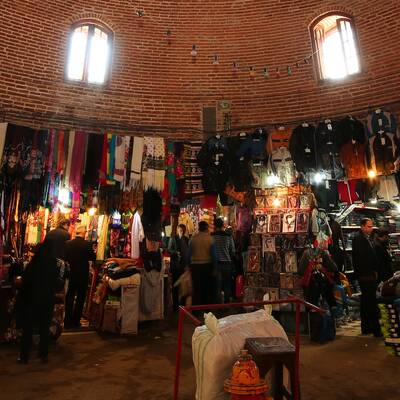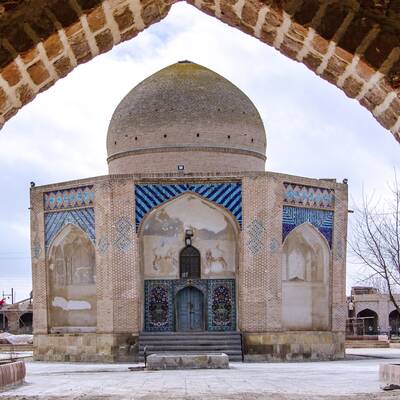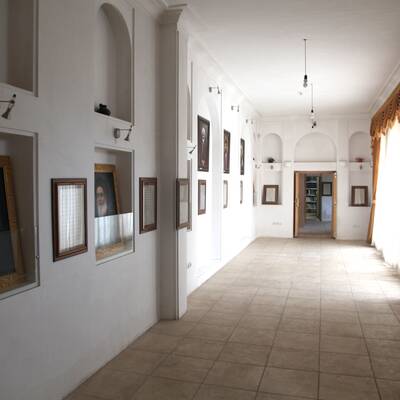The glorious Chini Khane Complex inside Sheikh Safi al-Din Khānegāh and Shrine Ensemble in the name of the famous mystic, the ancestor of Safavid kings, was built in 735 A.H. by his son, Sadr al-Din Mousa. Chini Khaneh is one of the most beautiful halls constructed during Safavid dynasty in Ardabil which was designed more than 400 years ago by Sheikh Bahaei. It includes 1256 cases in all of which there are Chinese wares gifted by Chinese emperors to Shah Abbas I on the occasion of reviving Silk Road as well as those Chinese wares commissioned by Iran government to be made.
These wares had been stamped with the quote “I am Abbas the King of this estate” in Isfahan by the artists of engraving technic, before being sent to Ardabil in order to be placed inside the cases of Chini (literary meaning Chinese) hall. Shah Abbas was resided in Chini Hall to rest or do Dervishes rituals (Chele Neshini) when he traveled to Ardabil. It is stated that the Russian forces looted more than 850 Chinese wares and also the invaluable books which had been kept in this hall, at General Paskevich’s command; now some of these looted materials are kept in Hermitage Museum and others in another Russian museum. This happening led to moving the remaining historic books and Chinese wares to other museums of Iran such as the National Museum and Isfahan and Shiraz museums.
Finally, the Chini Khane Hall was officially established after returning a part of materials from the National Museum of Iran in 1370 S.H. at the same time as the International Museum Day. Interesting among the objects on display in the current Chini Khane are the stone stamps of Safavid kings with six names of God, eight petal flowers symbolizing the mystical beliefs of Safavid kings, twelve petal flowers indicating they were duodecimal Shia, a collection of Safavid commands and silver coins. In addition to the Chinese wares and painted vases, there exists a precious Quran written in Kufic script on display in this first museum of Iran which is the third oldest Quran in the country. The Quran has been written on deer skin and is related to more than 1100 years ago.








